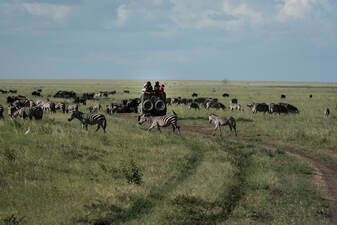
Exploring the Behavioural Decisions of Large Mammals to Anthropogenic Disturbance
Profitable anthropogenic activities, notably mining and environmental tourism, stand as crucial pillars for regional development in East Africa. They possess the potential to stimulate economic growth, create job opportunities, and promote cultural exchange. However, the prudence of their management dictates their impact on both the environment and society, potentially yielding adverse effects. Uganda, endowed with significant mineral resources like gold, copper, and cobalt, and graced with the ecologically significant landscape Murchison Falls National Park, harboring numerous endangered and endemic species, exemplifies this dilemma. Mining and tourism operations within the national park augment the country’s economy but involve ramifications for conservation efforts and the survival of diverse species.
Existing scholarly works concerning conservation in regions coexisting with mining and tourism have primarily spotlighted habitat degradation and audible noise disturbance as causal factors for species avoidance behaviors. Yet, seismic disturbances have received limited attention in the examination of this issue. Further research has demonstrated that large mammals, including elephants, employ seismic communication and sensing capabilities for navigation. Our research aims to bridge this knowledge gap by closely investigating the connection between seismic disturbances and avoidance behaviors displayed by large mammals in the context of mining and tourism. This exploration seeks to understand the intersectionality between geological and biological mechanisms within Murchison Falls National Park, contributing to a more comprehensive interpretation of this multifaceted ecological dynamic.




